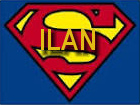Astronomy Day is Coming Up! How You Can Participate
Diana Hannikainen, Sky & Telescope | May 9, 2019
National Park Service / Kristen M Caldon
Twice a year the astronomical community congregates on what since 1973 has been known as Astronomy Day. That year, Doug Berger, then president of the Astronomical Association of Northern California, founded the event as a way of engaging local communities in the science and hobby of astronomy — he wanted to "bring astronomy to the people." What started as a one-day event in springtime has since flourished and is now not only celebrated all over the world but is also a biannual occurrence. (Promoted by the Astronomical League, Fall Astronomy Day was introduced in 2007).
Spring Astronomy Day is traditionally scheduled for a Saturday between mid-April and mid-May that is closest to or before the first-quarter Moon. This year’s Spring Astronomy Day will be celebrated on Saturday, May 11, when the Moon will be at exactly first quarter.
What can you expect?
To begin with, many science museums and planetariums host special programs and exhibits. If you live within driving distance of an observatory, see if they offer open houses to the general public. Local astronomy clubs participate by organizing star parties in the evening. But did you know you can also observe during the day? Many clubs will set up solar scopes — if you're lucky, you might catch a glimpse of sunspots or even prominences. (But remember, protect your eyes and don't ever look at the Sun directly.) Bear in mind that some clubs and associations may organize events on days other than Saturday to best suit their schedules. Remember to also check your local news outlets — your neighborhood park might have a fun program in store for you.
If you’re not a member of an astronomy club, browse through our directory to find one near you. You can also search for observatories, planetariums, and science museums. We’ve also listed a selection of events, aimed at all ages, at the bottom of this post. You don’t have to be an expert to participate — just head on out there, and remember, have fun! You’ll be with a whole bunch of other people who are as eager to learn and experience astronomy firsthand as you are.
What if you’re already busy this weekend and can’t participate? No problem, just mark your calendar for Fall Astronomy Day, which this year will be on October 5th.
Need Help Planning?
To help organizations and individuals plan programs, the Astronomical League and Sky & Telescope partnered to write the Astronomy Day Handbook. Written by David H. Levy and updated by Gary Tomlinson, the guide offers suggestions for conducting large and small programs. Also available for printing and handing out is the Astronomical League's The ABCs of Stargazing sheet, which can help you explain the basics of our hobby to newcomers. Consider distributing the Good Outdoor Neighbor Lighting flyer, an information sheet on light pollution and how we can work together to minimize it, at your event as well.
 |
 |
|
|||||||||||
 |
 |
||||||||||||
|
|
|
|
|
|
|
||||||||
 |
|
|
|
|
|
 |
|||||||
|
|
|
|
|||||||||||
|
|
|||||||||||||
|
|
|
|
|
|
|
|
|
|
|
|
|
|
|
Results 1 to 1 of 1
Thread: Astronomy Day
-
05-10-2019, 02:32 PM #1
Astronomy Day
Beginner's Guide for Rocket, NFPS and IKS66...
http://iptvtalk.net/showthread.php?2...-you-should-do
Kodi Options for Rocket, NFPS and IKS66...
http://iptvtalk.net/forumdisplay.php?71-Kodi
Check the Announcement Section...
http://iptvtalk.net/forumdisplay.php...-Announcements
Similar Threads
-
Astronomy and the climate crisis
By ilan in forum The Universe Closer to HomeReplies: 0Last Post: 09-13-2020, 12:20 PM -
Fascinating Astronomy Facts
By ilan in forum The Universe in ReviewReplies: 0Last Post: 03-23-2020, 12:44 PM -
A Proposed Definition of Astronomy Literacy
By ilan in forum The Universe in ReviewReplies: 0Last Post: 05-15-2019, 12:08 PM -
26 Amazing Astronomy Facts
By ilan in forum The Universe in ReviewReplies: 0Last Post: 12-09-2018, 02:06 PM -
Monty Python’s astronomy lesson
By ilan in forum The Universe in ReviewReplies: 0Last Post: 08-02-2018, 12:18 PM







 Reply With Quote
Reply With Quote